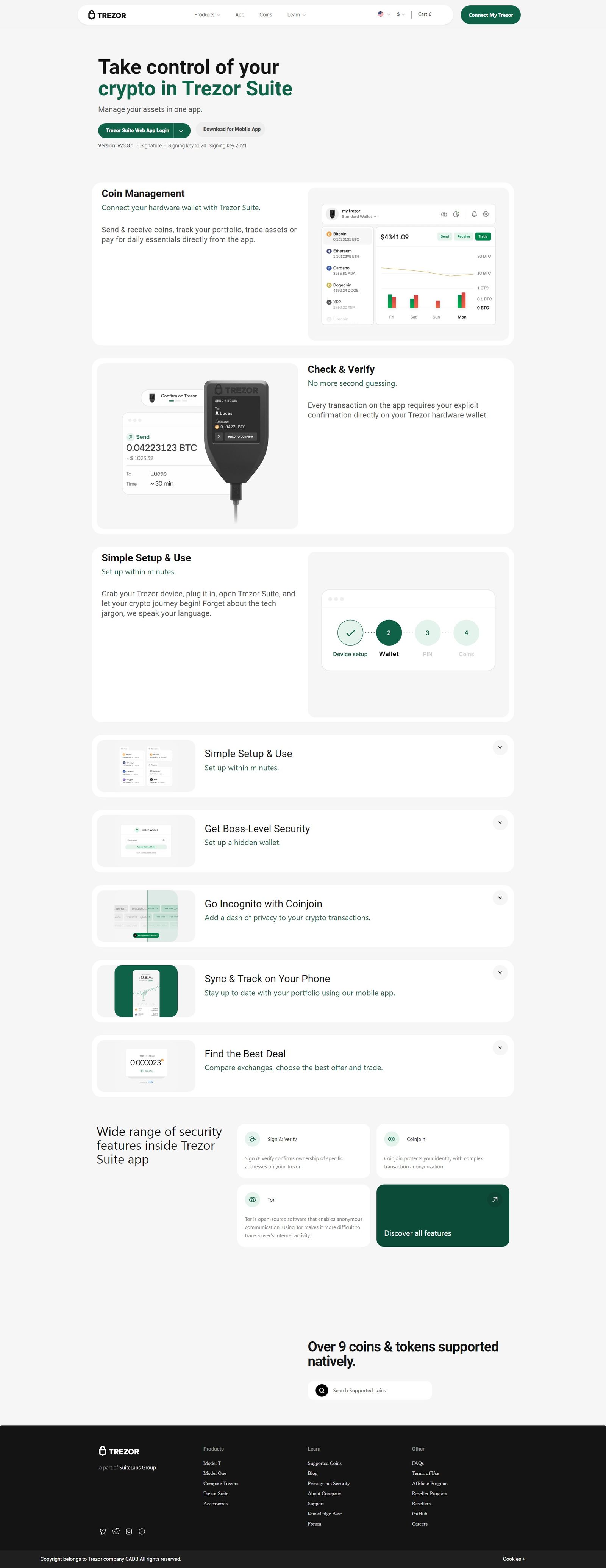
The Ultimate Guide to Trézor Bridge: Secure Your Crypto Assets Effortlessly
Introduction to Trézor Bridge
Trézor Bridge is a critical software tool designed to facilitate seamless communication between your Trézor hardware wallet and web browsers. Developed by SatoshiLabs, it ensures secure transactions and management of cryptocurrencies without compromising user privacy. This guide explores its features, setup process, benefits, and best practices to help you maximize security and efficiency in your crypto journey.
What is Trézor Bridge?
Trézor Bridge acts as a connector between your Trézor hardware wallet (like the Trezor Model T or Trezor One) and browser-based interfaces such as the Trezor Suite or third-party platforms like MyEtherWallet. Unlike browser extensions, it operates as a standalone application, reducing vulnerabilities associated with browser-based attacks. By installing Trézor Bridge, users enable their devices to securely sign transactions and interact with blockchain networks.
Why Trézor Bridge Matters for Crypto Security
Hardware wallets like Trézor are renowned for their offline storage of private keys, but they require a bridge to communicate with online platforms. Trézor Bridge ensures this connection remains encrypted and tamper-proof. It prevents phishing attempts, malware interference, and unauthorized access, making it indispensable for anyone prioritizing asset safety.
How to Install Trézor Bridge
- Visit the official Trézor website (trezor.io/start).
- Download the version compatible with your OS (Windows, macOS, or Linux).
- Run the installer and follow on-screen prompts.
- Connect your Trézor device via USB and refresh your browser.
The process takes under five minutes, and no advanced technical skills are required.
Using Trézor Bridge: A Step-by-Step Walkthrough
After installation, access Trezor Suite or a supported third-party platform. Connect your device, and Trézor Bridge will automatically detect it. For transactions:
- Navigate to the "Send" tab.
- Enter recipient details and amount.
- Confirm the transaction on your Trézor device’s screen.
The Bridge ensures all actions require physical verification on the hardware wallet, adding a layer of security.
Troubleshooting Common Trézor Bridge Issues
- Device Not Detected: Ensure the USB cable is functional and the Bridge is running. Restart the app if needed.
- Outdated Software: Regularly check for Trézor Bridge updates via the official site.
- Browser Compatibility: Use Chrome, Firefox, or Brave for optimal performance. Clear cache if interfaces lag.
Security Features of Trézor Bridge
Trézor Bridge employs end-to-end encryption and open-source code, allowing independent audits. It never exposes private keys, even during transactions. Additionally, firmware updates are cryptographically signed by SatoshiLabs, ensuring authenticity.
Trézor Bridge vs. Competitors: What Sets It Apart?
Unlike Ledger’s Live software, which relies on closed-source code, Trézor Bridge’s transparency fosters trust. It also supports a wider range of third-party wallets compared to alternatives like KeepKey.
Keeping Trézor Bridge Updated
Updates often include security patches and compatibility improvements. Enable automatic updates or manually download them from the Trézor website. Skipping updates risks exposing your device to newly discovered vulnerabilities.
Conclusion
Trézor Bridge is an essential tool for Trézor hardware wallet users, combining ease of use with military-grade security. By following installation best practices and staying updated, you can safeguard your crypto assets against evolving threats. Whether you’re a beginner or a seasoned investor, integrating Trézor Bridge into your workflow ensures peace of mind in the volatile world of cryptocurrencies.
Frequently Asked Questions (FAQs)
-
Is Trézor Bridge free to use?
Yes, Trézor Bridge is completely free and available for download on the official Trézor website. -
Does Trézor Bridge work with mobile devices?
No, it’s designed for desktop use. Mobile users can utilize the Trezor Suite app for iOS/Android. -
Can I use Trézor Bridge without a hardware wallet?
No, it requires a connected Trézor device to function. -
Is Trézor Bridge compatible with VPNs?
Yes, but ensure your VPN doesn’t block localhost connections required for communication. -
How often should I update Trézor Bridge?
Update immediately when new versions are released to maintain security. -
Does Trézor Bridge support all cryptocurrencies?
It supports all coins and tokens compatible with Trézor hardware wallets. -
Can malware affect Trézor Bridge?
The Bridge itself is secure, but always verify transaction details on your device’s screen. -
What browsers are supported?
Chrome, Firefox, Edge, and Brave. Safari is partially supported. -
Is my data stored on Trézor Bridge?
No—it only facilitates communication and doesn’t store personal information. -
How does Trézor Bridge differ from Trezor Suite?
The Suite is a wallet interface, while the Bridge is a communication tool for browser connectivity.